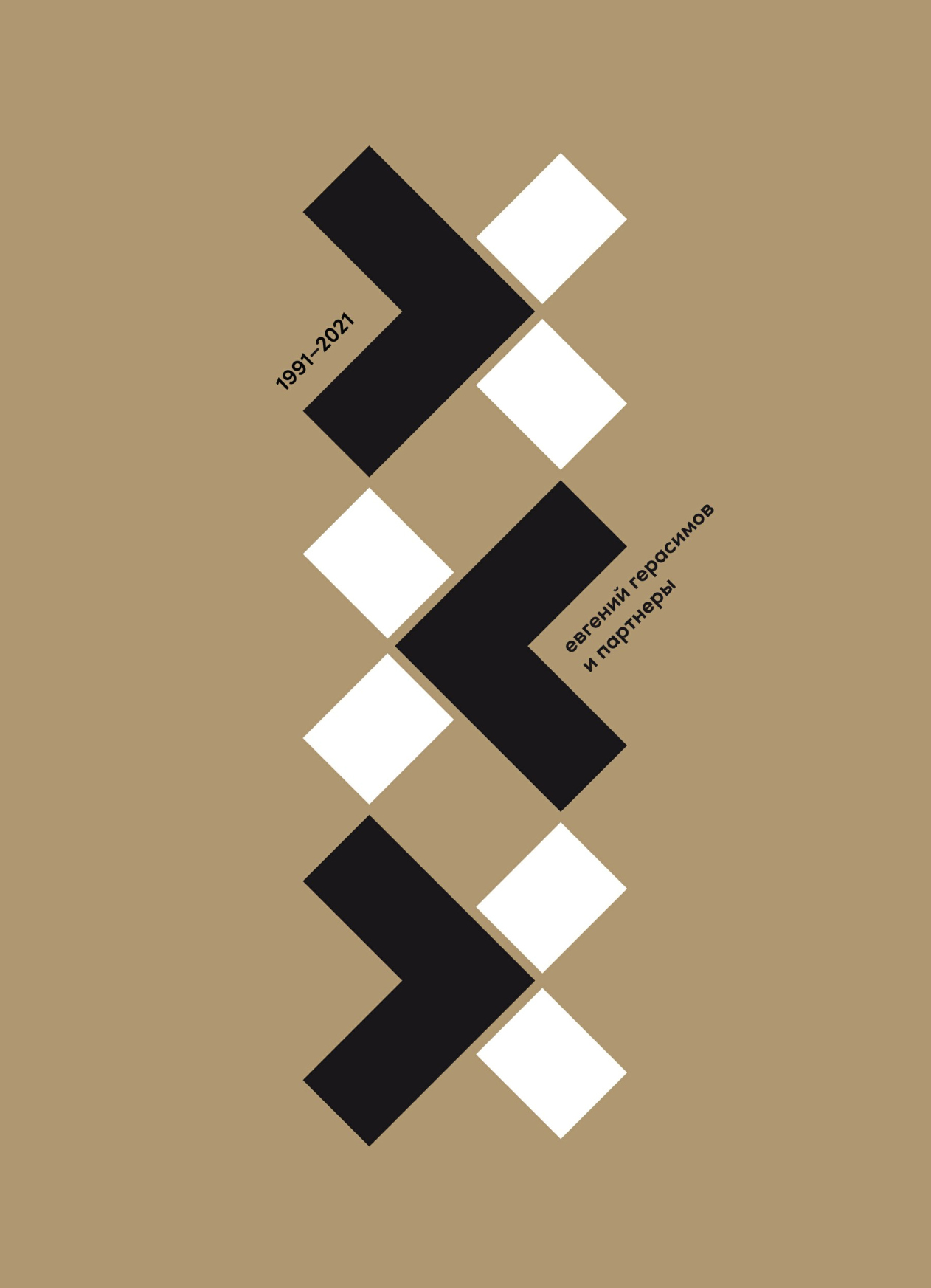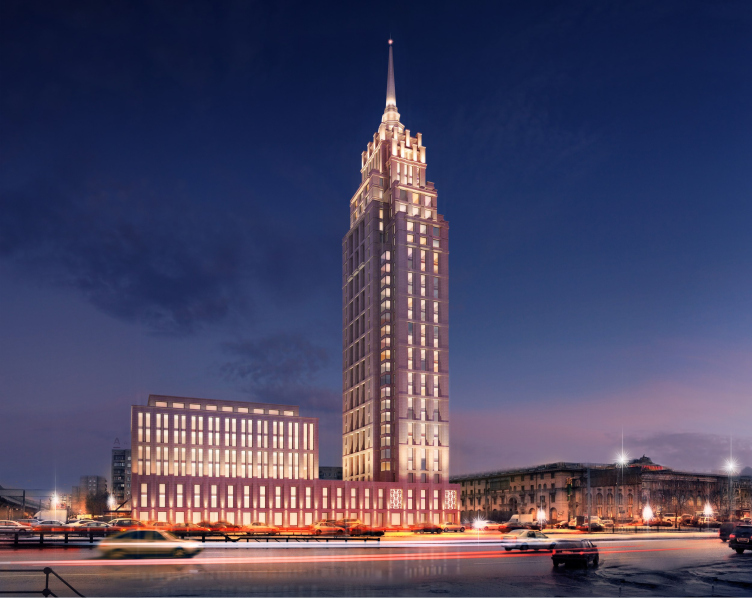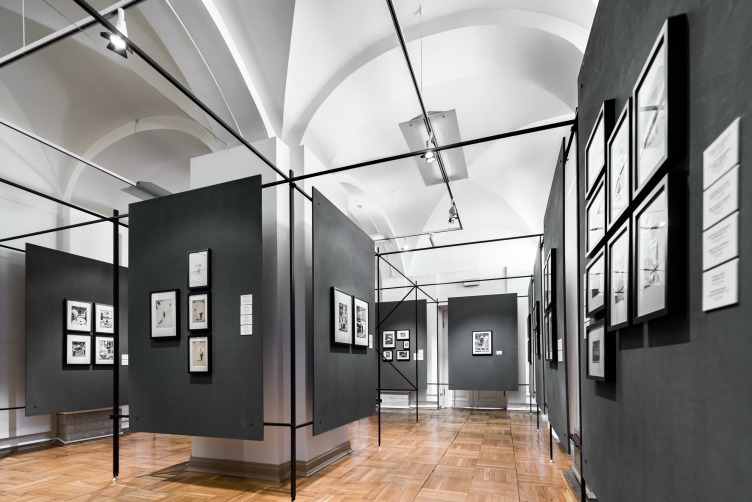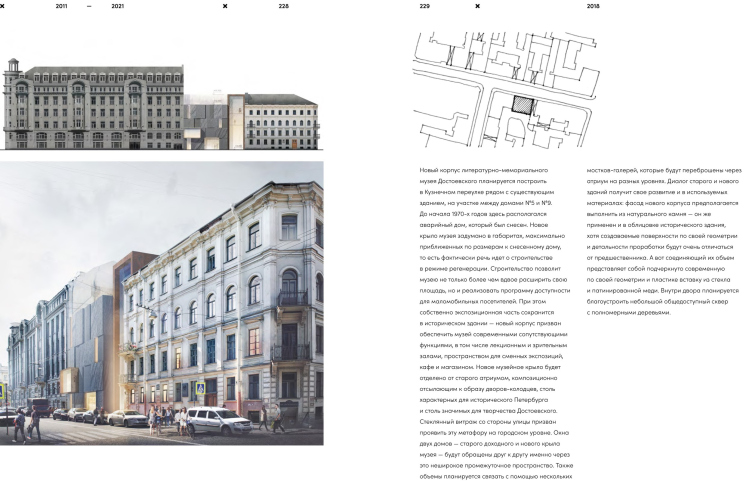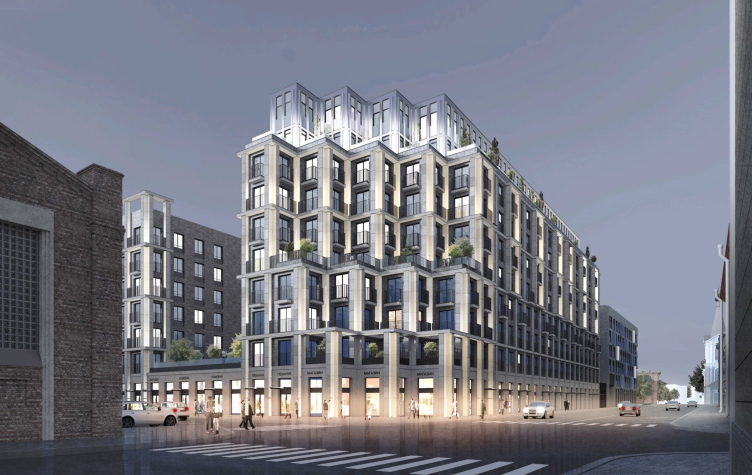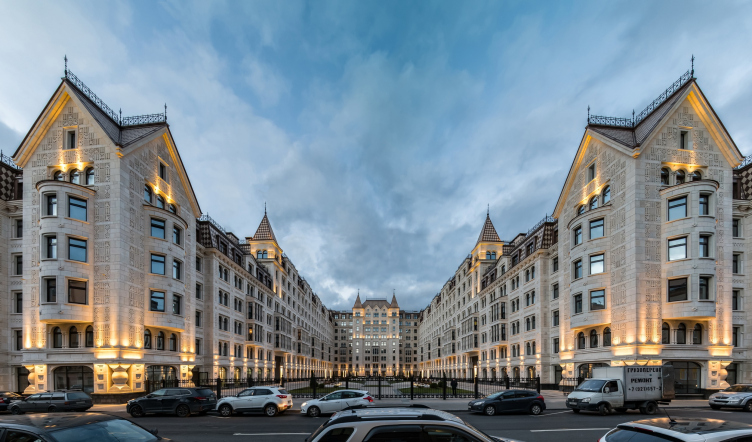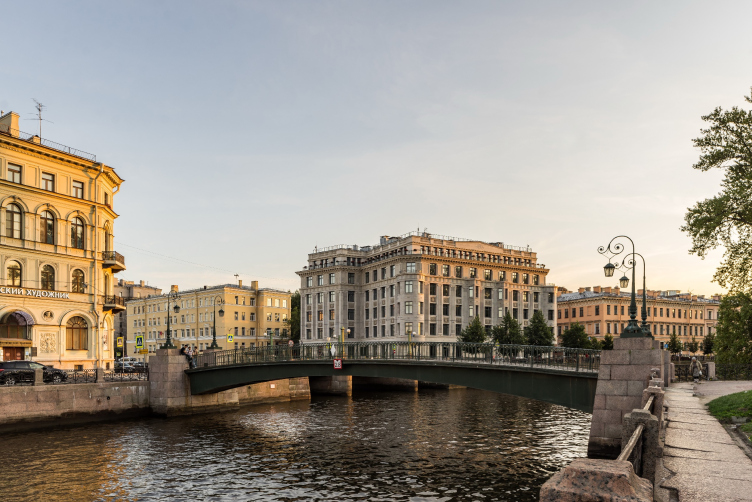The book is very much like the company’s projects – once you notice it on the shelf you will want to touch it and see how it’s wired. There are three sections, one for each decade, hidden under the dust jacket with a silver cutout, stylized, perhaps, after the drawings by El Lisitsky. Here is crème de la crème: 38 top projects done by the company, from the townhouses in Kupchino to the Alcon Tower in Moscow. Each of the projects is accompanied by sketches, short, yet informative, annotations, written by Anna Martovitskaya, and a multitude of photographs that allow you to take in the details. At the end, there is a consolidated catalog of projects and buildings, which already includes 83 projects. The press run of the book was only 1000 copies; you can buy one in the company’s HQ or in the Subscription Editions store.
We talked to Evgeny Gerasimov in order to mark the next milestone in the company’s history. The interview about the previous “five-year plan” is available here.
***
Archi.ru
What do you think of the last 5 years in terms of developing your company? What has changed, and what is changing?
Evgeny Gerasimov:
The company keeps on rolling – we develop our professional competences, try to work in different styles, keep on growing, and try to make sure that we don’t rest on our laurels. The company keeps reinventing itself – today we have a lot of young people working for us, and, on the whole, our number shrank but we have no issue with it: fewer projects spell better quality. I am still pressed for time because I still check out the details of every project. Currently, we have 115 employees; there are still five partners, me included, and each Chief Architect is in charge of four or five projects.
Multifunctional complex “Alcon III” on Leningradsky Avenue in Moscow. Project, 2014
Copyright: © Evgeny Gerasimov and Partners
After sanctions were imposed on Russia, we have certain difficulties with procuring construction materials, but these are not fatal, and at any rate solvable. There are domestic manufacturers, and there are a lot of stone analogues in the markets not affected by the sanctions. In addition, the production of brick is developing in Russia. The sanctions only pushed our development forward.
In recent years, you have been investing more time in the publishing agenda of your company (books about Dmitry Kryzhanovsky and Alexander Lishevsky – editor’s note), as well as supporting artists. Why? What is the purpose of all this?
The exhibitions are embodiment of my collector’s activity: this is the way it was with the collection of graphics by Solomon Yudovin, who drew his pictures in the besieged Leningrad, then with pastel paintings by Jan Antonyshev, and my participation in the “Deineka/Samokhvalov” project. Recently, me and my wife Julia created the DICTUM FACTUM foundation, and we publish books about architects of Saint Petersburg, as well as support projects in the sphere of art – for example, we organized an exhibition of lithographic pictures by Olga Vasilyeva.
Multifunctional complex “Tsarev Garden” on the Sofiyskaya embankment in Moscow
Copyright: Evgeny Gerasimov and Partners © Photo by Dmitry Chebanenko
You also have charity architectural projects.
Yes, a cross has already been erected on the dome of the church of St. John of Kronstadt. The construction work is not moving as fast as we would like it to be but we will make sure to complete this project. We also do not give up hope that the city will allow the Dostoevsky Museum to be realized – all the residents of the apartments that existed next to the museum have been provided with new housing, and we are waiting for the land site to be officially provided to us.
Solomon Yudovin exhibition in the Stroganovsky Palace
Copyright: © image courtesy by Evgeny Gerasimov and Partners
In 2021, you became the chairman of the Union of Architectural Companies. What does the Union do now, and what has changed under your supervision? Are we waiting for an architectural biennale?
We have developed and registered the new charter of the Union. There are 16 members in it now. We are very happy to see new companies- these are Oleg Manov’s Futura Architects, Ilia Yusupov studio, Ingmar Vitvutsky studio, Valentin Logan’s SLOI, architectural bureau A2, Spetsrestavratsiya Institute, ASM studio, and Andrey Sharov is back again. We have already presented the anniversary XX annual edition, and in November we are planning to resume the architectural biennale.
The Union of Architectural Companies is an association of producers of “architectural content”, i.e. design specifications and estimates. As opposed to the Union of Architects, it includes not just private individuals but legal entities as well. If we are to compare this with soccer, then the Union of Architectural companies is an association of clubs, and the Union of Architects is an association of players. We exchange information, discuss topical issues, and develop professional recommendations.
Fragment of the book “Evgeny Gerasimov and Partners”, 1991-2021
Copyright: © image courtesy by Evgeny Gerasimov and Partners
In one of your five year old interviews you reproached modern architecture for absence of beauty. Have things improved since then in this sense? And, more broadly – what does beauty in architecture mean to you?
Regretfully, in many respects, modernist architecture is not beautiful. The word “beauty” has been bastardized, and the skill of drawing is substituted by the skill of talking about innovations and sustainability. Marketing spins can sell whatever you want: when people need to sell ugly things, they will develop all sorts of rationale, and they will tell you that this is the next big thing. You don’t have to explain why the paintings by Leonardo are beautiful, but you do have to explain this about the Black Square. It’s the same way with modern architecture – it’s all about fancy talk. Real mastery is valued less and less, and the skill of presenting yourself more and more. But those who do have mastery needn’t pay attention to that and just keep on doing their work.
Today, you need to build (a) a lot (b) cheap, and (c) something that looks different, and, as a result, architecture turns into some sort of expo business, like packaging design. But people soon get tired of the packaging, you need to invent something new, and this cycle grows ever shorter, as if you were selling handbags or something. There is real architecture that is meant to last for a long time, and it is done by a limited number of architects and developers – like haute cuisine – and there is architectural fast food meant to satisfy people’s need for housing. These are two different genres.
Residential complex “LEGENDA Sampsonievskogo”
Copyright: © Evgeny Gerasimov and Partners
What goals do you set for yourself, what would you want to achieve, what new genre would you like to try your hand at?
The goal is still pretty much the same – to build good houses. This is what we do for a living, this is how we create workplaces, and this is what we pay taxes from. Our forte is housing of the category above average, this is the main bulk of our company’s product. We are ready to try something different, but our main goals never change. However, just to stay where you are you need to run twice as fast.
esidential complex “Russian House”. Evgeny Gerasimov and Partners
Copyright: Photograph © Andrey Belimov-Gushchin
Art View House on the Moika Waterfront
Photograph © Andrey Belimov-Gushchin / Evgeniy Gerasimov & partners

